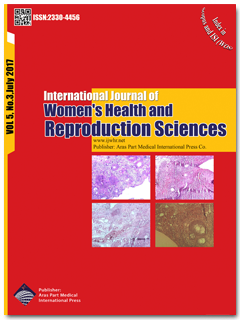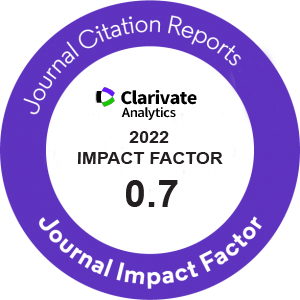| Original Article | |
| Maternal and Fetal Outcomes in Pregnant Women With Polyhydramnios Treated Based on Maternal and Fetal Distress and Preterm Delivery | |
| Zahra Fardiazar, Leila Soltanpour, Fatemeh Ghatrehsamani | |
| Women?s Reproductive Health Research Center, Tabriz University of Medical Sciences, Tabriz, Iran | |
|
IJWHR 2017; 5: 237?242 DOI: 10.15296/ijwhr.2017.42 Viewed : 3329 times Downloaded : 3513 times. Keywords : Polyhydramnios, Indomethacin, Amnioreduction |
|
| Full Text(PDF) | Related Articles | |
| Abstract | |
Objectives: Polyhydramnios is a condition that could be along with significant maternal, fetal and neonatal consequences. One of the most important complications of this condition is preterm labor and delivery of preterm neonates. Although in mild cases expectant conservative management is effective, in more severe cases, medications (such as indomethacin) and amnioreduction could be considered. Each one of these methods could be accompanied with complications. This study aims to examine the results of management of patients with polyhydramnios according to the fetal and maternal distress and preterm labor criteria. Materials and Methods: In this descriptive-analytic setting, 26 pregnant mothers with polyhydramnios (amniotic fluid index [AFI] more than 30) were managed according to the fetal and maternal distress and preterm labor criteria. In cases under 32 gestational weeks, indomethacin was used with an initial dose of 25 mg every 6 hours and a maximum dose of 2-3 mg/kg that was tapered when the AFI diminished. In refractory cases, the flowchart of fetal and maternal distress and preterm labor was employed. In pregnancies aged over 32 weeks, in case of maternal distress amnioreduction was performed, and in asymptomatic patients, cervical length, funneling, color Doppler and placental thickness were evaluated and in normal cases controlling was carried every 1-2 weeks and abnormal cases amnioreduction was carried out. Results: The mean age of studies patients was 28.12 ± 7.22 years and the mean pregnancy age was 232.23 ± 23.57 days. On this basis, there were 8 patients under 32 gestational weeks, in which indomethacin was administered and a response to treatment was seen in the week 1. All cases have increased amniotic fluid again in week 2. In 2 cases, re-administration was done. All patients including those aged over 32 weeks and those who reached 32 weeks by using indomethacin were managed according to the suggested algorithm. Symptoms indicating maternal distress was present in 3 patients (11.5%), 2 of them were treated with amnioreduction and the other one did not give consent and pregnancy termination was carried out at the age of 29 gestational weeks due to cord prolapse. In 2 cases with amnioreduction, the pregnancy reached to term. The mean cervical length was 32.38 ± 2.38 mm and dilatation or funneling was not present. Decreased placental thickness, placental malfunction and abnormal placental circulation were not detected. Except for the one mentioned case, all pregnancies were terminated over 34 gestational weeks, and besides a case with prolapse, no other maternal, fetal or neonatal complication was observed. Conclusion: The effect of indomethacin was temporary and this medication could be used safely. The beginning of delivery is suddenly in these patients and is not predictable by cervical changes. The placenta was normal in all cases in the current study. In case of maternal distress, amnioreduction was along with good outcome. Color Doppler evaluation and placental thickness were not accompanied with good results. |
Cite By, Google Scholar
Online Submission System
 IJWHR ENDNOTE ® Style
IJWHR ENDNOTE ® Style
 Tutorials
Tutorials
 Publication Charge
Women's Reproductive Health Research Center
About Journal
Publication Charge
Women's Reproductive Health Research Center
About Journal
Aras Part Medical International Press Editor-in-Chief
Arash Khaki
Mertihan Kurdoglu Deputy Editor
Zafer Akan






















